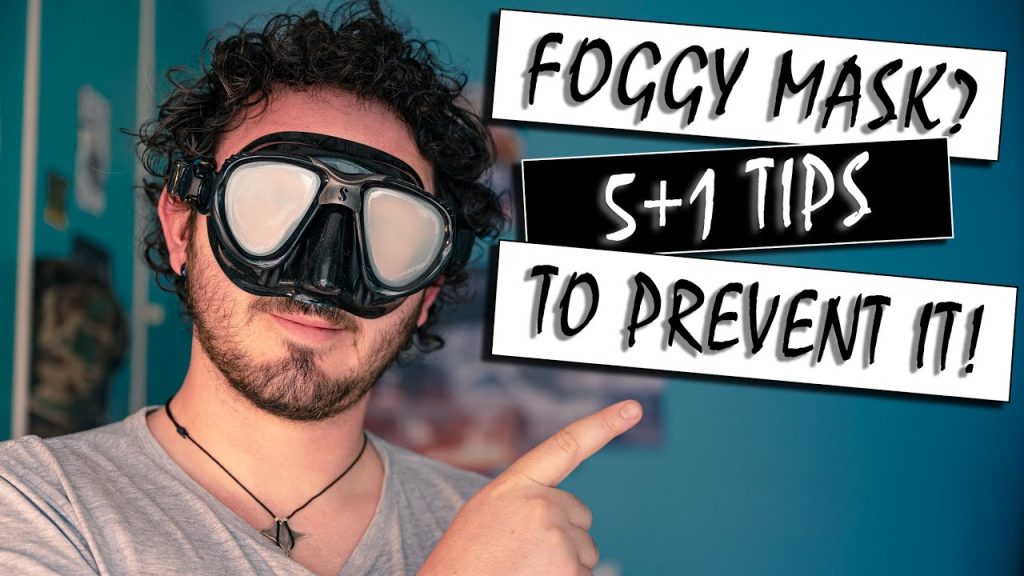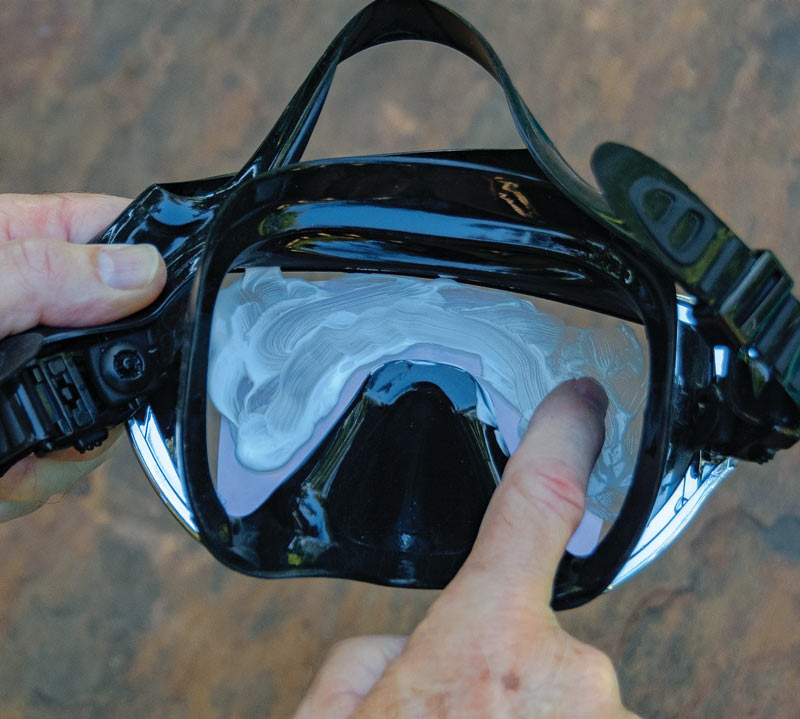
Are you an avid scuba diver? If you’ve ever gone diving, you know the frustration of having your mask constantly fogging up, obstructing your view of the magnificent underwater world. But fear not! In this article, we will share some valuable tips on how to prevent fogging in your scuba diving mask, allowing you to fully immerse yourself in the beauty beneath the surface. So grab your gear, and let’s dive into these helpful suggestions!
Choose the right mask
Consider the design
When choosing a scuba diving mask, it’s important to consider the design. Look for a mask with a low profile, as this will provide a wider field of vision underwater. Additionally, opt for a mask with a wide nose pocket to allow for equalization during dives. Take your time to find a mask that fits comfortably on your face and feels secure.
Opt for a well-fitting mask
A well-fitting mask is crucial to prevent fogging during your dives. Make sure the mask sits snugly on your face without feeling too tight or uncomfortable. Check for any gaps between the mask and your skin, as these can lead to fogging. It’s worth trying on different masks and sizes to find the best fit for you.
Select a mask with anti-fog coating
To further prevent fogging, it’s a good idea to choose a mask that comes with an anti-fog coating. This coating helps to reduce the build-up of condensation on the lens, ensuring a clear view underwater. Double-check that the mask you choose has this feature, as it can greatly enhance your diving experience.
Preparation before diving
Clean the mask properly
Before each dive, it’s essential to clean your mask thoroughly. Use a mild detergent and warm water to remove any residue or debris. Take extra care to clean the inner lens, as this is where fogging usually occurs. Rinse the mask well to ensure no soap or residue is left behind.
Apply a defogging agent
A defogging agent is an excellent tool in preventing fogging in your scuba diving mask. Apply a small amount to the inner lens and spread it evenly. This agent creates a thin film that prevents condensation from forming on the lens. Be sure to choose a defogging agent specifically designed for scuba diving masks.
Spit method
If you don’t have a defogging agent on hand, the spit method can be used as an alternative. Spit into the mask and rub the saliva around the inner lens using your finger. Rinse the mask with freshwater to remove any excess saliva. While not as effective as commercial defogging agents, this method can provide temporary relief from fogging.

This image is property of www.tropicalsnorkeling.com.
Proper mask care
Avoid touching the inner surface
One of the most common causes of fogging is touching the inner surface of the mask with your fingers. The oils and residue on your skin can transfer onto the lens, causing fogging during your dive. Avoid touching the inside of the mask at all costs and handle it by the straps or frame instead.
Rinse with freshwater after diving
After each dive, it’s crucial to rinse your mask with freshwater to remove any saltwater or debris. Saltwater can leave behind a residue that can contribute to fogging, so it’s important to eliminate it completely. Thoroughly rinse the mask inside and out, ensuring all areas are clean before storing it.
Store the mask properly
Proper storage is essential for maintaining the quality of your scuba diving mask. Keep your mask in a dedicated mask box or bag to protect it from scratches and dust. Avoid leaving it in direct sunlight or extreme temperatures, as these can affect the integrity of the mask. By storing it properly, you can prolong its lifespan and minimize the risk of fogging.
Avoid excessive humidity
Control your breathing
Excessive humidity can contribute to fogging in your scuba diving mask. To minimize this, try to control your breathing while underwater. Slow and steady breaths help to reduce the amount of warm, moist air that enters the mask and causes condensation. Focus on breathing from your scuba regulator rather than directly into the mask.
Avoid breathing directly into the mask
Although it may be tempting to breathe directly into the mask to clear fog, this can actually make the problem worse. When you exhale directly into the mask, you introduce warm, moist air that quickly condenses on the lens. Instead, practice using proper mask clearing techniques to remove any water or fog that accumulates during your dive.
Use a deflector
A deflector is a simple tool that can be attached to your regulator to redirect your exhaled air away from your mask. By diverting the warm air away, you can prevent fogging from occurring. This accessory is especially useful for divers who tend to exhale more forcefully, as it helps to maintain a clear view throughout the dive.

This image is property of www.smacodive.com.
Temperature adjustments
Warm the mask
If you’re diving in colder waters, warming your mask before entering can help prevent fogging. Place the mask partially filled with warm water for a few minutes before putting it on. This warms up the lens, reducing the temperature difference between the mask and the surrounding water, minimizing the chances of fogging.
Avoid sudden temperature changes
Sudden temperature changes, such as going from a warm environment to cold water, can cause condensation to form on your mask. To minimize this, try to acclimate to the water temperature gradually before fully submerging. This allows your mask to adjust to the temperature, reducing the risk of fogging.
Proper mask positioning
Ensure a proper seal
An airtight seal is crucial in preventing fogging in your scuba diving mask. Before entering the water, make sure the mask is positioned correctly on your face. Adjust the straps to fit comfortably but securely. Press the mask against your face to ensure a proper seal, and check for any gaps or leaks. A well-sealed mask will minimize the chance of warm, moist air reaching the lens.
Avoid tilting the mask
Tilting the mask can disrupt the seal and allow water or warm air to enter, increasing the risk of fogging. Avoid tilting your head back or forward while diving, as this can cause the mask to shift. Keep your head in a neutral position and maintain steady, controlled movements to ensure the mask stays in place.
Equalize often
Equalizing your mask is essential not only for your comfort but also for preventing fogging. As you descend, make sure to equalize the pressure inside your mask by exhaling gently through your nose. This helps to ensure the mask remains sealed and minimizes the chance of fogging. Continue to equalize regularly during your dive to maintain a clear view.

This image is property of i.ytimg.com.
Regular maintenance
Inspect and replace silicone seal
Over time, the silicone seal on your scuba diving mask may wear out or become damaged, compromising its ability to create an airtight seal. Regularly inspect the seal for any signs of wear, such as cracks or tears. If necessary, replace the silicone seal to maintain optimal performance and prevent fogging.
Polish the inner lens
Polishing the inner lens of your mask helps to minimize the chances of fogging. Use a soft cloth or lens cleaning solution specifically designed for scuba diving masks to gently polish the lens. This removes any residue or build-up that can contribute to fogging and ensures a clear, unobstructed view during your dives.
Check for cracks or damage
Regularly inspect your mask for any cracks, scratches, or damage that could compromise its integrity. Even small cracks or chips can contribute to leaks and fogging. If you notice any signs of damage, it’s best to replace the mask to ensure your safety and prevent fogging issues.
Alternative anti-fog methods
Baby shampoo solution
An alternative to commercial defogging agents is a baby shampoo solution. Mix a small amount of baby shampoo with water and apply it to the inner lens of your mask. Make sure to rinse it thoroughly before diving. This method helps to create a protective film that prevents fogging and can be an effective and affordable solution.
Toothpaste method
The toothpaste method is another alternative for preventing fogging. Apply a small amount of non-gel toothpaste to the inner lens and spread it evenly. Rinse the mask well before using it to remove any excess toothpaste. This method forms a temporary coating on the lens that helps prevent fogging during your dive.
Commercial anti-fog products
There are various commercial anti-fog products available specifically for scuba diving masks. These products are often more effective than homemade alternatives and provide long-lasting protection against fogging. Follow the manufacturer’s instructions for application, and always rinse the mask thoroughly before diving.

This image is property of i.ytimg.com.
Prevent mask flooding
Master mask clearing techniques
Proper mask clearing techniques are essential for preventing mask flooding and subsequent fogging. Practice these techniques regularly to ensure you can clear your mask efficiently during dives. Remember to maintain a calm and controlled breath while clearing the mask to minimize the risk of fogging.
Properly adjust straps
An ill-fitting mask can lead to leaks and fogging, so it’s important to properly adjust the mask straps. The straps should hold the mask securely in place without causing discomfort or leaving excessive marks on your face. Take the time to adjust the straps to achieve a comfortable and secure fit, reducing the risk of fogging.
Avoid over-tightening
While it’s important to have a secure fit, over-tightening the mask straps can cause discomfort and increase the risk of leaks. Find the right balance between a snug fit and comfort. A properly fitted mask will stay in place and create an effective seal without the need for excessive tightening.
Consider a full-face mask
Benefits of a full-face mask
A full-face mask offers several benefits in preventing fogging during your dives. Unlike traditional masks, full-face masks cover your entire face, providing a wider field of vision and a more comfortable fit. Additionally, they often come with integrated anti-fog features, such as separate breathing chambers and air channels, reducing the likelihood of fogging.
Anti-fog features
Full-face masks often come equipped with anti-fog features that help maintain a clear view underwater. These features can include additional ventilation systems, deflector mechanisms, or specially designed lenses. If fogging is a recurring issue for you, a full-face mask with advanced anti-fog technology may be a worthwhile investment.
Proper fit and training
To ensure the best results, it’s important to choose a full-face mask that fits properly and undergo proper training. The fit should be snug but comfortable, providing an airtight seal. Additionally, familiarize yourself with the correct usage of the full-face mask, including mask clearing techniques and procedures specific to this type of mask.
By following these tips and techniques, you can prevent fogging in your scuba diving mask and enjoy clear, uninterrupted visibility during your underwater adventures. Remember to choose the right mask, properly prepare and care for it, control humidity and temperature, position it correctly, and practice regular maintenance. With the proper knowledge and attention, fogging will no longer be a hindrance to your diving experience.

This image is property of 97208546.m3nodes.com.






